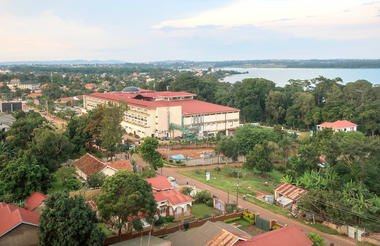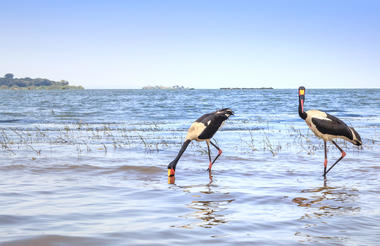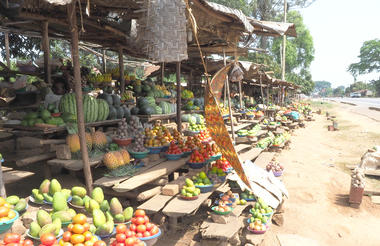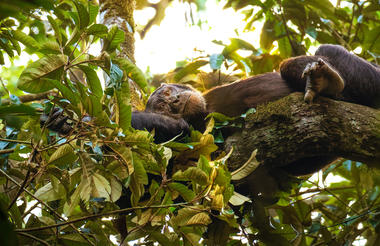The former seat of Uganda’s government, Entebbe just a short drive from the current capital and offers plenty to keep visitors amused. Tourists can while away days on the beaches along the banks of Lake Victoria, stroll around the fields and forests of the Botanical Gardens. Or visit the Wildlife sanctuary specializing in conservation, wildlife rescues and rehabilitation, and captive breeding of endangered wildlife species.



Bwindi Impenetrable Forest National Park
Bwindi Impenetrable Forest National Park lies on the edge of the Western Rift Valley in South Western Uganda, along the border of the Democratic Republic of Congo. The park encompasses a total area of 331km² and was first created as a forest reserve in 1932 then becoming an animal sanctuary in 1961 and a National Park in 1991. In the local dialect “Bwindi” means “a Place of Darkness”, getting its name from the dense vegetation of the forest. With the mountains reaching 2,607m, it contains both lowland and montane forest, much of which is swirled with a mist.
This ancient forest is cool and dark with dense vegetation and is home to an impressive array of ecosystems and wildlife. It hosts 120 species of mammals which includes 10 species of primates, 350 species of birds, 220 species of butterflies/moths, 27 species of frogs, geckos and chameleons, over 1,000 species of flowering plants which include 104 species of ferns and 200 species of trees. The forest habitat includes many endangered species, the most well known of which, is the mountain gorilla. The estimated number of gorillas living in the Impenetrable Forest is 320, with some groups being habituated for tracking and research.
Take the challenge and track the endangered mountain gorillas, follow trails in the forest from Nkuringo to Buhoma along the way seeing many varieties of birds, primates and butterflies, track to the waterfalls and learn about local Batwa cultures.



Imposing cone-shaped hills cradle tranquil calderas in the enchanting Ndali-Kasenda Crater Lakes in Western Uganda near Kibale Forest and Queen Elizabeth National Parks. Formed about 8-10,000 years ago by volcanic activity, these craters now hold a variety of lakes. Some boast clear, blue water, while others remain emerald green with a sulfuric odour due to residual volcanic gases. Lush vegetation cloaks the crater rims, offering views of nearby hills, tea plantations, and even the Rwenzori Mountains on clear days. While some lakes are safe for swimming, others contain toxic water and should be avoided. Activities around the lakes include nature walks, boat rides, bird-watching and visiting the "Top of the World" viewpoint for panoramic vistas.







